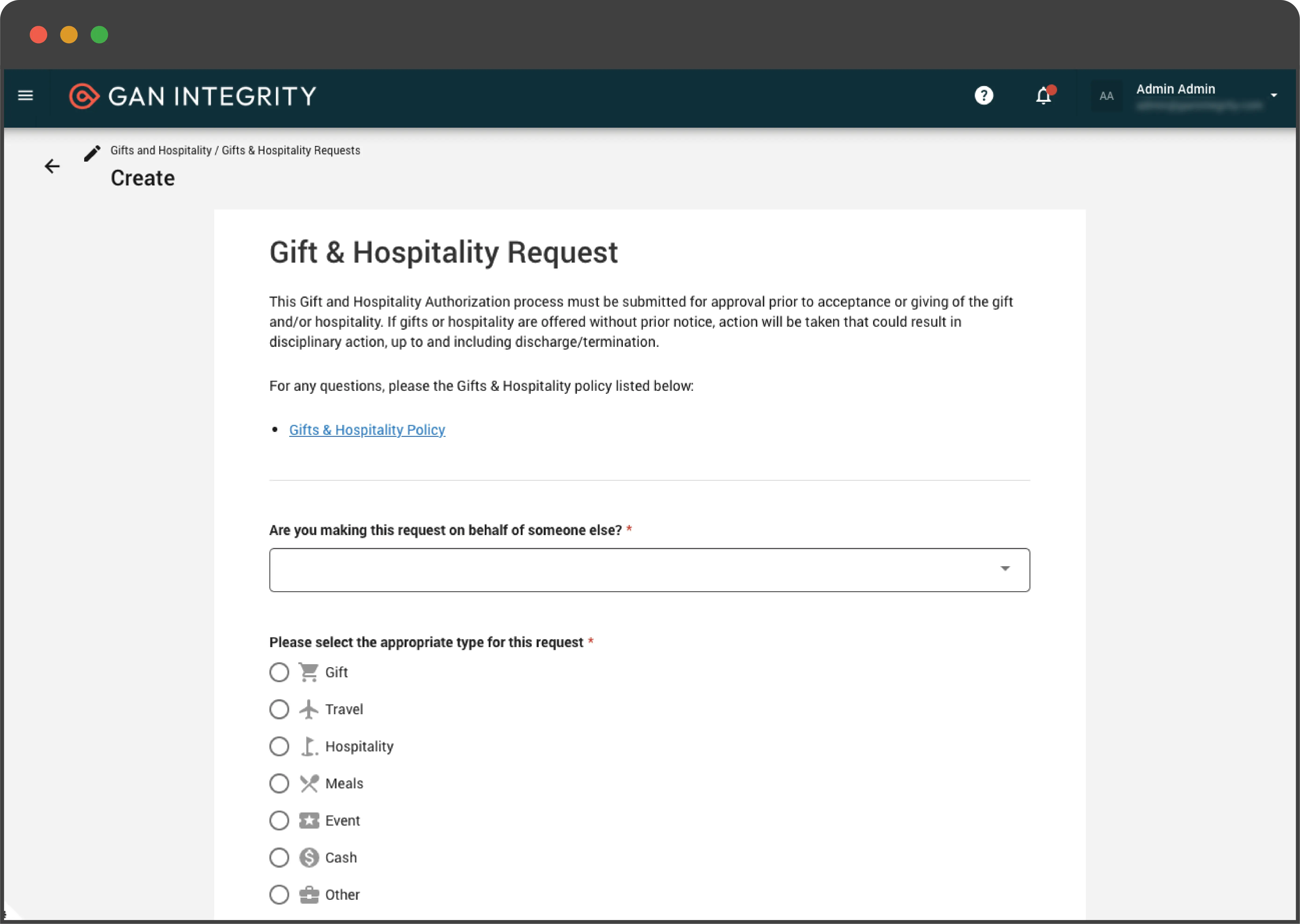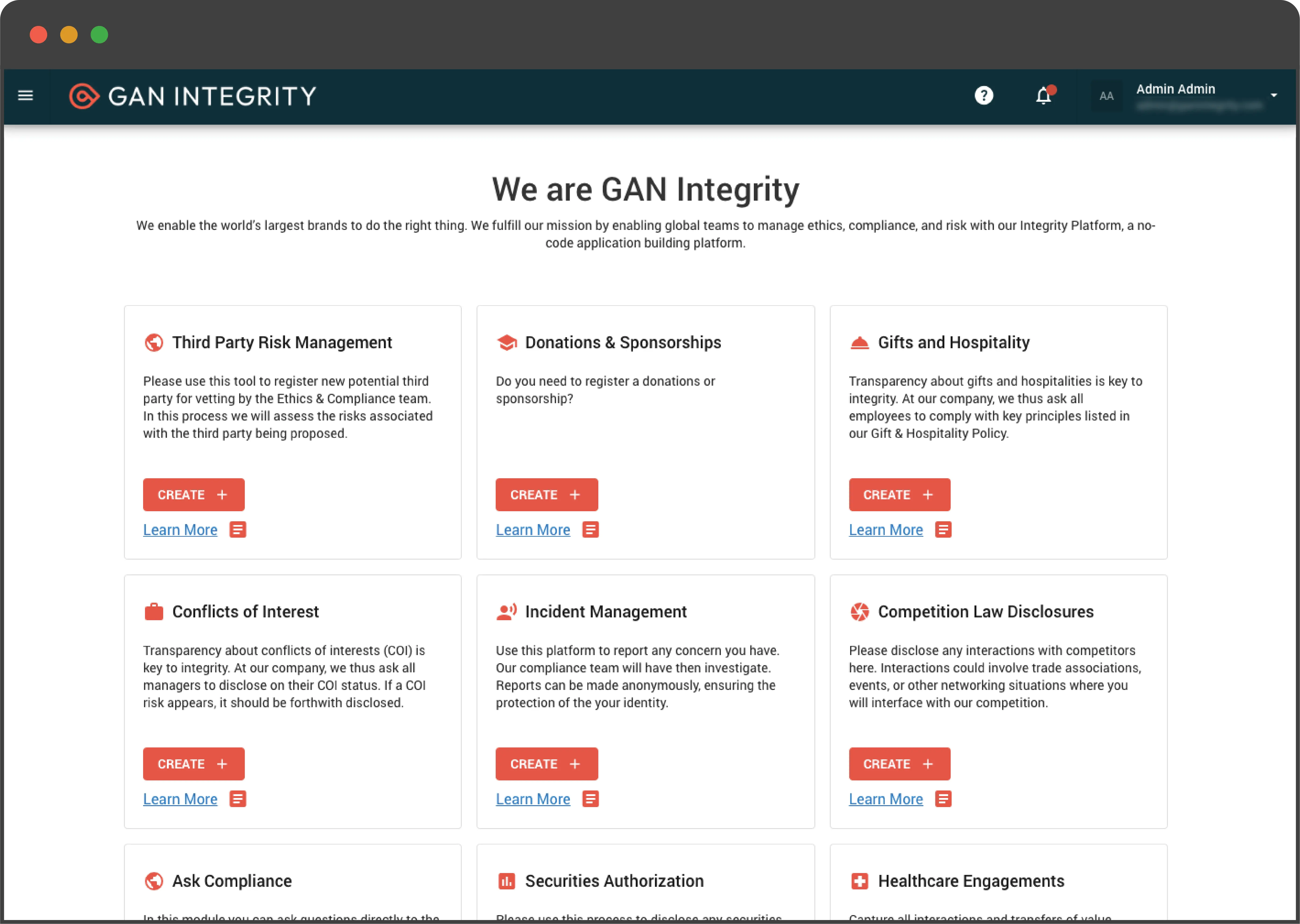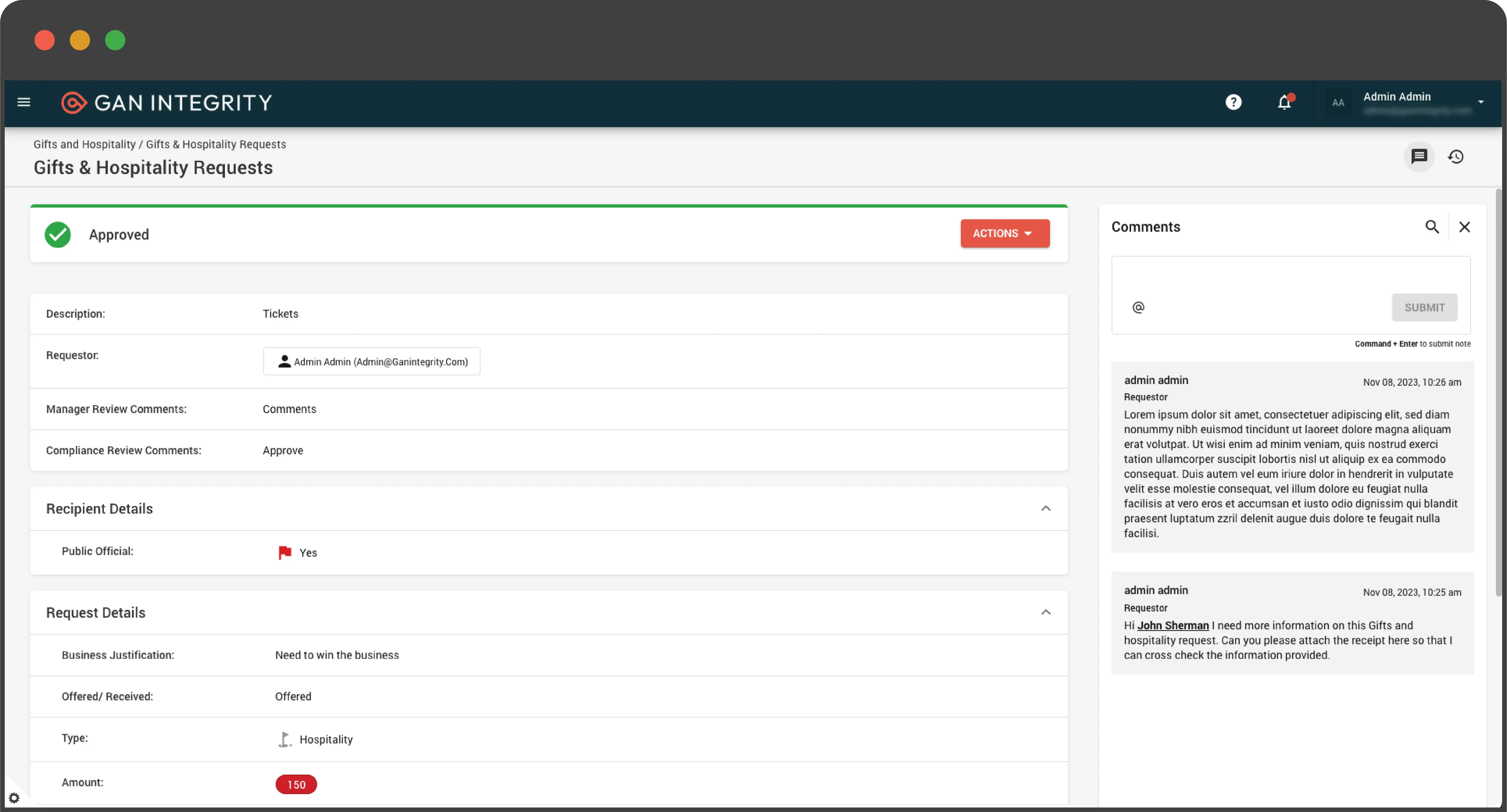Disclosures and reporting are foundational to compliance programs. They sit at the core of ensuring transparency and good governance across the business. Undisclosed data or information leads to blind spots in a company’s risk management program, it impedes compliance teams from effectively achieving an overview of what is going on in the organization and accurately funneling insights back to management and the board.
Nonetheless, adoption of disclosure processes can be challenging at global enterprises with a large employee population. The pace of change, operational speed and agility combined with a varying number of stakeholder engagements can make it burdensome for employees to disclose matters comprehensively and in a timely manner. Clunky and opaque disclosure systems add insult to injury, making it more likely for employees to abandon procedures or circumvent them altogether.
So how can you scale your disclosures program while ensuring that the rest of the organization keeps pace?
In this edition of the GAN Integrity Innovation Corner series, we look at how you can leverage the Integrity Platform to design a scalable disclosure program while safeguarding adoption and engagement. We will dive into the main elements of a disclosure technology you need to consider when assessing or optimizing your program. These will include;
- Considering the employee experience
- Creating an accessible and accommodating disclosure environment
- Building a one-stop-shop disclosure hub
- Streamlining the approval process
- Operationalizing disclosure procedures into the business
- Allowing for in-platform collaboration
Considering the Employee Experience
The real test of any technology platform is how effectively it is adopted. No matter how much thought you’ve put into your policy and procedure to ensure it’s covering all of the regulatory and business requirements, if it’s not easy to use, it will eventually be abandoned. Interactions with software applications are a daily part of life, in fact, the average smartphone owner uses 10 apps per day with an average time of 3 hours. It’s safe to say that employees are indeed very used to interacting with software applications; a disclosure application should therefore aim to be on-par with the expectations of users if they aim to secure a high engagement rate.
A seamless employee experience is an essential aspect of the Integrity Platform design. Consistency, transparency and intuitiveness of the information and journey is crucial, not only for adoption, but also for the completeness of the disclosure. Remember, employees are requested to disclose information the system can parse, process through the right approval process and pass on to the right stakeholder if human review is necessary. When information is lacking, the process and output might be flawed, or worse, erroneous.
The Integrity Platform disclosure forms are a key component in the process of every disclosure collection. From the content displayed to the way it is presented, disclosure intake forms are tailored to reflect the needs and brand of any business. Intake forms are fully configurable allowing you to define questions, labels, categories, additional inquiries and other data points that need collecting during solution design, enabling you to ensure that sufficient data is collected to ensure the effective assessment of the risk involved.

Disclosure intake forms are designed to ensure a seamless user experience; branded and structured to create a user-friendly space for employees. Built-in data validation prompts, error messages and instructions to guide users towards accurate and complete inputs are all embedded capabilities with the purpose of ensuring adequate and complete information. Clear labeling and instructions that make use of your internal language further help users enter data correctly as familiar language reduces any confusion or uncertainty around the information requested.
Dynamic form behavior creates a cohesive and succinct journey, presenting users with questions and data that are only relevant to them. By recognizing the user’s role and underlying attributes, the platform only displays questions and queries that are relevant to the user interacting with the form, while the answers inputted by the user will trigger any necessary related questions thanks to underlying conditions and initial risk level assessments ensuring a thorough description and contextualization of the disclosure. For instance, if an employee discloses a gift to an official, the intake form will trigger additional questions to ensure that all of the necessary information is captured for a thorough review of the request.
Creating an Accessible and Accommodating Disclosure Environment
A disclosure system most likely touches every employee in your organization, even ones that are potential future employees. The same could be said of your third parties; a potential conflict of interest might impact a third party’s risk profile or even require ending a partnership. Carefully considering the technology you use to capture and manage disclosures from an accessibility perspective is critical for adoption.
With the Integrity Platform, disclosures can be submitted through any mobile device, ensuring that employees with no access to computers can easily declare matters. Accessibility is also addressed from a localization perspective; where a wide range of languages are supported allowing employees and third parties to submit disclosures in the language they feel most comfortable using. Accessibility of the Integrity Platform also encompasses the enablement of employees with special needs, ensuring that these are accommodated for in the process of information disclosure, review and management.
Building a One-Stop-Shop Disclosure Hub
Disclosure processes come in many shapes and forms: the most commonly known are conflicts of interest declarations and gifts and hospitality disclosures. The Integrity Platform has, however, accommodated a wide range of disclosure processing to meet unique business needs and niche industry requirements. Many organizations have chosen to bundle all procedures with a disclosure nature into one disclosure hub, presenting employees with a single touch point for all disclosure-related matters. The Integrity Platform can accommodate all of these and many more thanks to its flexible data model and no-code workflow infrastructure, allowing its users to design unique processes to capture the data they need and process it through a workflow that meets their internal business requirements.
Creating a one-stop-shop has allowed compliance teams to not only save time training their staff - organizations report that a single session has been sufficient for the roll out - but to also ease employees’ user experience, enabling them with a single touchpoint for all disclosures; one UI, one familiar process. To use the words of Business Integrity Global Lead at Barrick Gold, Jessie O’Neil; “one session was enough for us to explain how it works”, in reference to the roll out and training of employees on their disclosure program on the Integrity Platform. You can read the full case study here.

With the Integrity Platform’s Welcome Portal, employees are enabled with a centralized point of entry for interacting with a wide range of applications and processes. The platform’s Welcome Portal functions as a gateway providing users with an overview of all available information and actions to be performed. Just like the forms, applications and data displayed on the portal is subject to data governance, meaning that whichever user is logged in will only be able to see data pertaining to their profile attributes; including role, region and seniority. The Integrity Platform’s Welcome Portal can be configured to further ease navigation; with embedded start pages it is possible to configure short-cuts allowing users to easily get to desired areas of the platform in one click.
Creating a Streamlined Approval Experience
Just as the UI experience needs to be seamless for employees, managers are an equally important stakeholder in the review and approval process of disclosures. As part of the mission to make everyone a guardian of ethical business, managers who can easily parse, approve and/or escalate disclosures are better poised to become an extension of your compliance team.
Leaning on its core capabilities, the Integrity Platform can help you do just that. Tapping into a flexible workflow architecture and role-based access control, disclosure approval processes can be tailored to create seamless user journeys for employees and managers alike. Tailoring actions and views to provide users with the right information at the right time contributes to a smooth user experience which, in turn, ensures users are presented with the information needed to take appropriate action.
Serving both purposes of streamlining processes and enhancing the user experience, workflow automation, combined with role-based access control allows you to design a disclosure process that is consistent across the organization. By tapping into conditional workflow automation, you can escalate disclosures based on the risk levels to the appropriate reviewer, while low risk declarations can either be automatically approved or processed by direct managers. The ability to freely define the platform’s underlying data assessment criteria, coupled with role-based data access controls, allows you to design a structured risk evaluation framework that consistently parses disclosure risk information and engages stakeholders as needed in the process.
Operationalizing Disclosure Procedures
As with any compliance procedure, awareness raising and training are critical. But even with the most effective training programs in place, declaring conflicts, gifts, donations or other, might escape employees wrestling with the daily requirements of the business. Tools that not only sensitize employees, but are embedded into business operations can make it much easier and more accessible for employees to submit disclosures as they become part of and not superimposed to procedures.
With the Integrity Platform, you can keep disclosures top of mind in a multitude of ways. A regular reminder of conflict-of-interest disclosure for instance can be triggered through the platform’s embedded campaign functionality. Many choose to set a yearly conflict of interest campaign reminder for all employees, requiring the disclosure of any actual or potential conflicts, or confirm that there are none, allowing for a regular and thorough organizational check.
Operationalizing disclosure procedures into the business, however, ensures that disclosures are effectively captured outside the regular campaign cadence. System integrations can facilitate a seamless disclosure process by linking the Integrity Platform with your enterprise’s platform ecosystem, allowing for a disclosure step to be embedded into other processes. This could, for instance, manifest in connecting the Integrity Platform to your accounts payable systems to ensure that all gift, travel, and hospitality receipts are only paid out when processed through the compliance system. The integration can allow for an automated processing and potential approval of, say, a gift when meeting predefined value thresholds, while triggering a compliance or manager approval escalation when exceeded.
Allowing For In-Platform Collaboration
When additional information needs to be communicated ad hoc, when stakeholders have to be engaged at scale, yet no relevant data field or action button maps to your need, the Integrity Platform’s Notes creates an integrated workspace that allows for free collaboration and instant stakeholder engagement. The platform’s built-in Notes provide users with a much more collaborative communication tool that accommodates longer notes, attachments, and @ mentions allowing users to provide additional information, attach files or engage stakeholders to assess and review declarations.

Notes is another way to capture exceptions or additional data that was not solicited, allowing for all information to be captured in one place and under one declaration for easier processing. Every stakeholder involved in approving the declaration can easily access the additional information provided in the notes section for more context.
Conclusion
It can be challenging to take into account all of the elements that make up for a good user experience when it comes to employee-facing compliance processes. That said, adoption and engagement are key when it comes to affecting change towards ethical business conduct. Many, in fact, most employees within your organization are willing to do the right thing, it’s up to you to design a system and framework that helps them do just that; considering the human experience in its interaction with the technology is a very good starting point.

Miriam Konradsen Ayed is the VP of Product Marketing at GAN Integrity. With a track record of building and executing GTM strategies and growing pipeline for SaaS products, she brings products to life through value-driven positioning and messaging.
